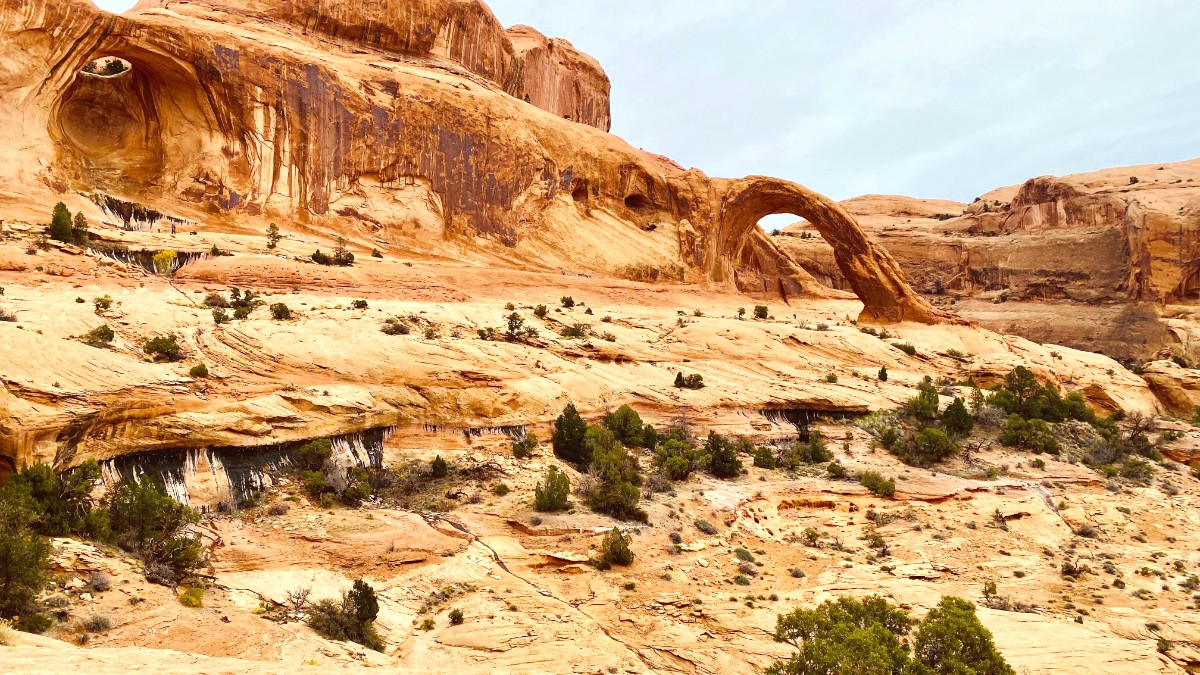
Southwest, USA
Arches National Park shelters over 2,000 natural sandstone arches. Canyonlands National Park (Island in the Sky district), closest to Moab, presents panoramic mesa-top views. Dead Horse Point State Park displays some of Utah's most iconic vistas.
These parks offer diverse experiences, from challenging hikes to accessible viewpoints, all set against the dramatic backdrop of the red rock desert.
Ranger-led programs often enrich park visits; check visitor centers for schedules.
Numerous accessible sites near Moab feature ancient rock art. Popular locations include Potash Road (Hwy 279), Kane Creek Road, and Newspaper Rock (south of Moab). These are protected sites; touching the rock art is not allowed.
Many lesser-publicized sites exist within Arches and Canyonlands. Inquire at visitor centers for information on accessible sites and viewing guidelines.
Downtown Moab preserves some historic buildings reflecting its ranching and mining past, especially along Main Street. Note the architectural styles of older structures.
Historical remnants of uranium mining appear, for example, along Potash Road. Early ranching history is visible at Wolfe Ranch in Arches National Park, with its preserved old cabin and orchard.
No major religious sites exist for tourism in Moab. No specific large-scale memorial sites are present; the national parks serve as natural monuments.
Beyond the popular national parks, Moab features a wealth of natural wonders, scenic landscapes, and lesser-known spots for unique experiences.
A large, accessible natural arch outside Arches National Park. The hike is 3 miles round-trip and includes fixed cables and ladders.
Impressive sandstone spires over the Colorado River. This area presents a scenic drive and hiking trails, offering close-up views.
A scenic paved drive with cooler temperatures and forested landscapes, with stunning views of the red rock desert below. It delivers access to higher elevation hiking trails.
Opportunities to see raptors, waterfowl, and bighorn sheep along the Colorado River. Mule deer, coyotes, various birds, and lizards reside in the national parks, with best viewing at dawn and dusk.
Moab is famous for its unique geology: red rock formations, slickrock (eroded sandstone), and salt domes. These features shaped the arches and canyons.
The Colorado River supports rafting, kayaking, paddleboarding, and fishing. Ken's Lake, a small reservoir south of Moab, is popular for fishing, swimming, and paddleboarding. No extensive formal gardens.
A beautiful canyon with a perennial stream leading to Morning Glory Arch. Popular for hiking and canyoneering, this area presents a lush contrast to the arid desert.
Several sites near Moab contain fossilized dinosaur footprints, like the Mill Canyon Dinosaur Tracksite and Bull Canyon Dinosaur Tracksite. These sites display a direct connection to the area's prehistoric past.
A popular local spot for hiking, swimming in natural pools (during wet seasons), and rock climbing. It offers both easy and more challenging trails, depending on how far you explore.
Beyond the well-known attractions, Moab presents numerous lesser-known spots for unique experiences and fewer crowds.
Moab's natural wonders demand a thoughtful approach to planning. Allocate ample time for each park and consider specific entry requirements like timed entry passes for Arches.
Utilize official park websites and resources for the most up-to-date information on conditions, trail closures, and safety guidelines. Early morning visits often counter crowds and high temperatures.
Arches National Park often has timed entry; book well in advance. Canyonlands is less crowded but still popular. Dead Horse Point State Park welcomes visitors as a beautiful alternative.
Desert conditions mean significant hydration. Carry more water than you think you will need, especially for hikes. Electrolytes are a good addition.
Moab's sun is intense. Use sunscreen, hats, and protective clothing. Seek shade during peak heat hours (mid-day) when possible.
The official National Park Service websites deliver detailed information on operating hours, fees, alerts, and trail conditions for Arches and Canyonlands.
Arches National ParkFor Dead Horse Point State Park, consult the official Utah State Parks website for visitor information and updates.
Dead Horse Point State ParkFor Arches National Park's timed entry system, all reservations are managed through Recreation.gov.
Recreation.gov (Arches)For various guided tours to attractions and activities around Moab, GetYourGuide is a reputable platform for bookings.
GetYourGuideThe Moab Information Center and local visitor guides present additional insights and current conditions.
Discover MoabMoab's cultural institutions deliver insights into the region's rich natural and human history.
The Moab area is rich with historical sites, from ancient rock art to remnants of early settlements.
Consider purchasing the America the Beautiful Pass if you plan multiple national park visits across the U.S. This pass covers entrance fees at national parks and federal recreational lands for a year.
For popular spots like Delicate Arch, consider visiting at sunrise or sunset for incredible lighting and fewer crowds (outside timed entry hours, if applicable).
Beyond the main attractions, Moab features lesser-known spots that present unique experiences and quieter moments amidst the desert grandeur.
Explore serene canyons away from the main tourist routes for a different side of Moab's natural beauty.
Connect with Moab's ancient past and observe its stunning night skies.
Seek out ancient petroglyph and pictograph panels that tell stories of past cultures.
Remember these are protected sites; do not touch the rock art.
Explore remnants of Moab's past, from pioneer settlements to mining operations.
These sites connect you to the human history that shaped Moab.
While the national parks are magnificent, other natural formations merit exploration.
These areas highlight the diverse geological beauty around Moab.
For booking attraction tickets and guided tours, GetYourGuide offers a wide array of options for exploring Moab's landmarks.
The official NPS websites for Arches and Canyonlands are authoritative sources for visitor info, alerts, and regulations.
The go-to site for booking timed entry permits for Arches National Park and various campsites.